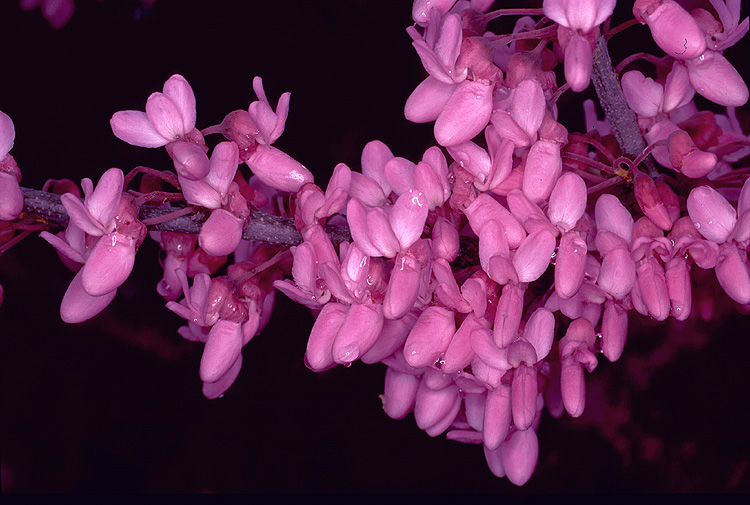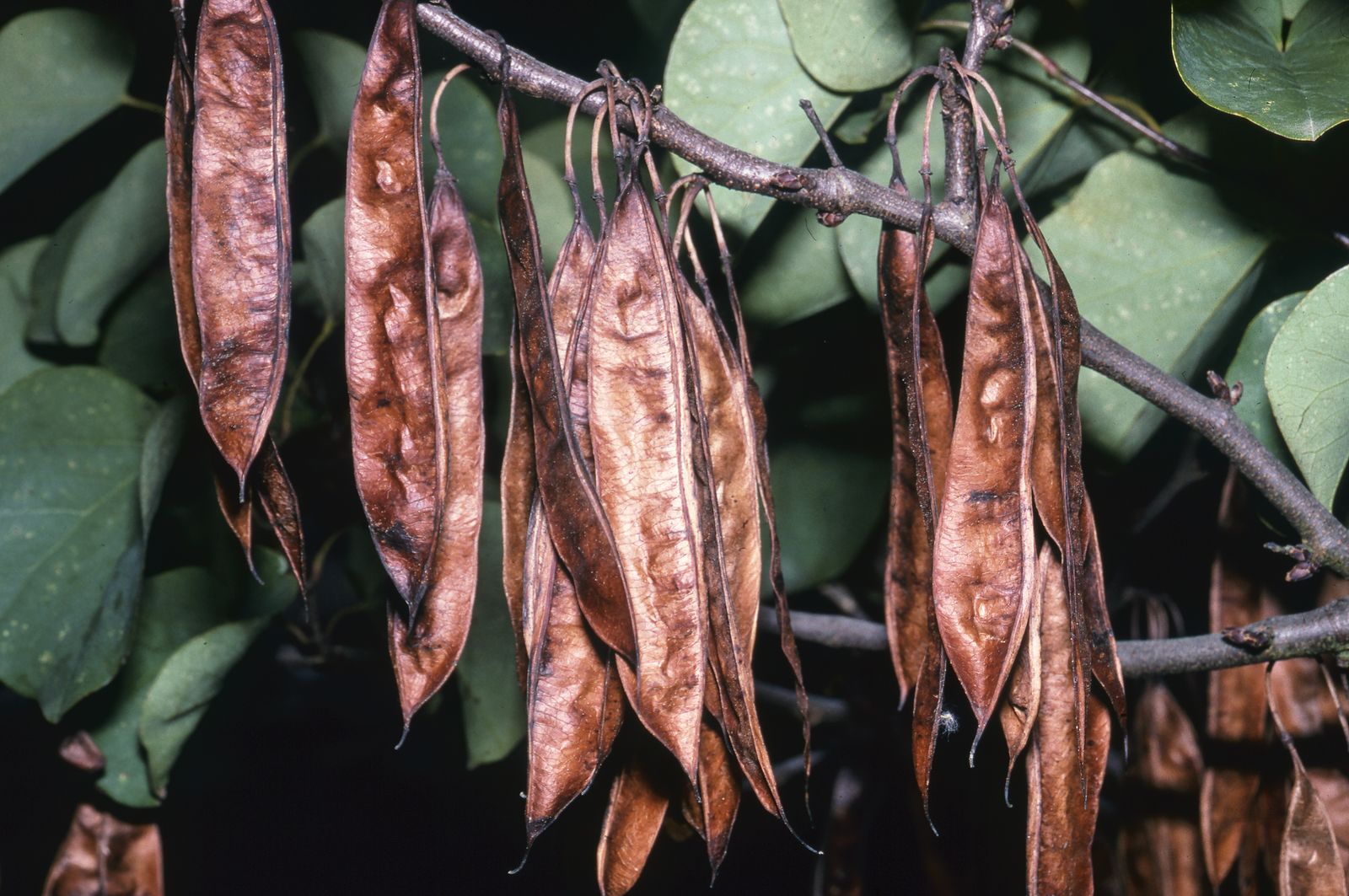Judas tree
cercis siliquastrum
Also known as: ["Judas tree","Love tree"]
Overview
A deciduous tree native to the Mediterranean region, known for its striking pink or purple flowers that bloom directly on the branches in early spring.
Benefits & Perks
["long-flowering","wildlife attractant (bees, butterflies, birds)","aesthetic foliage"]
Botanical Classification
| Phylum: | Magnoliophyta |
| Class: | Magnoliopsida |
| Order: | Fabales |
| Family: | Fabaceae |
| Genus: | Cercis |
| Botanical Name: | Cercis siliquastrum |
Plant Characteristics
Basic Information
- Category: Trees
- Suitable Location: outdoor garden, preferably in a location with some protection from harsh winds
- Suitable For:
- Is Weed: No
- Allergenicity: low
Environmental Needs
- Climate: {"temperatureRange":"–12–35°C"}
- Hardiness: {"zones":"6–9"}
- Misting: rarely required, only if grown in very dry indoor conditions
- Drainage: Fast-draining to prevent root rot.
- Soil Type: Well-draining loamy soil with organic matter; tolerates poor soils but thrives with added compost.
Maintenance Level
- Maintenance Level: moderate
- Toughness Level: moderate
- Pruning Frequency: Annually after flowering; light pruning can be done in late winter if needed.
- Pruning Intensity: Moderate; remove up to one-third of old growth if rejuvenation is required.
Care Details
Ideal Sunlight Coverage:
Full sun (6–8 hours of direct sunlight daily); tolerates partial shade but may flower less.
Sunlight Tolerance Tips:
Acclimate new plants gradually to direct sun; protect from intense midday sun in hot climates; ensure good air circulation to prevent sunburn.
Care Requirements
Care Difficulty
moderatemoderate
Sunlight
full sun to partial shade
Morning sun is ideal; rotate plant for even growth; avoid sudden light changes.
Watering
every 7–10 days during active growth, less frequently in winter
Water thoroughly until runoff, ensure soil dries slightly between waterings, and avoid overwatering to prevent root rot.
Soil
well-drained, loamy soil with moderate fertility
pH: Slightly acidic to neutral (pH 6.0–7.0).
Ensure good drainage; amend with organic matter; avoid waterlogged conditions.
Temperature
Hardy in USDA zones 7–9; prefers 60–75°F (15–24°C) during active growth; tolerates winter lows to 0°F (-18°C) in dormant state.
Protect from frost in early spring; avoid placing near heat sources indoors; ensure good air circulation in hot weather.
Fertilizing
every 4–6 weeks during spring and summer
Fertilize only in spring; use half-strength liquid fertilizer if needed; avoid feeding in winter.
Propagation
Methods
Softwood cuttings in summer or seed propagation in spring.
Step-by-Step Propagation Guide
- Take 4–6 inch cuttings.
- Remove lower leaves.
- Dip in hormone.
- Plant in medium.
- Maintain moisture and humidity.
Best Time: Late spring to early summer for cuttings; late winter to early spring for seeds.
Environment
Warm (70–75°F), humid environment with indirect light; protect from direct sun.
Medium
Well-draining potting mix with perlite or sand; can root in water initially for cuttings.
Hormone
Rooting hormone recommended for cuttings to improve success rate.
Timeline
Cuttings root in 4–8 weeks; seed germination takes 1–3 months with stratification.
Tools Needed
Pruning shears, rooting hormone, small pots, misting spray bottle, plastic wrap.
Quick Tips
Use healthy, non-flowering stems; maintain consistent moisture; provide bottom heat if possible.
Pruning & Repotting
Pruning Guide
Method
Thinning cuts to open the canopy, heading cuts to shape, and selective removal of weak or diseased branches.
Pruning Plan
Shape the tree, remove dead or crossing branches, and encourage flowering by pruning after blooming.
Tools
Pruning shears, loppers, saw for larger branches, disinfectant for tools.
Checklist
Disinfect tools; prune after flowering; remove deadwood; shape evenly; avoid over-pruning.
Repotting Guide
Best Season
Early spring before new growth begins; avoid repotting during dormancy.
Pot Size
Increase pot size by 2–3 inches in diameter; ensure pot has drainage holes.
Method
Remove plant gently; trim roots if necessary; use fresh well-draining soil; ensure proper drainage layer at bottom.
Suggestions
Repot young trees every 2–3 years; mature trees may only need repotting every 5–7 years or when root-bound.
Checklist
Prepare new pot; trim roots if crowded; use fresh soil mix; water thoroughly after repotting; place in shade for a few days.
Advanced Care Tips
Watering Mastery
Watering Checklist
Check soil moisture with finger; water deeply; ensure drainage; adjust seasonally.
How to Apply Water Properly
Water directly at the root zone, apply until water drains from the bottom, ensure even moisture without waterlogging, and water early in the morning or late evening to minimize evaporation.
Watering Schedule Tips
Water deeply once per week during spring and summer; reduce frequency to every 2–3 weeks in fall and winter, allowing soil to dry partially between waterings.
Soil Improvement
Add compost or well-rotted manure; incorporate perlite or sand for drainage; avoid heavy clay soils.
Temperature Stress Management
Signs of Temperature Issues
Leaf scorch in excessive heat, leaf drop or dieback in prolonged cold, delayed flowering in temperature fluctuations.
Cold Stress
Leaves may drop, growth halts, and branches can die back if exposed to prolonged freezing temperatures without dormancy.
Solution: Mulch heavily around the base in winter; protect young plants with burlap screens; ensure proper dormancy by reducing water in fall.
Hot Stress
Wilting, leaf scorch, and reduced flowering can occur in extreme heat without adequate water and shade.
Solution: Provide afternoon shade in intense heat; increase watering frequency; use mulch to retain soil moisture.
Fertilizing Guide
Fertilizing Checklist
Check fertilizer type; apply at recommended rate; water after fertilizing; monitor for signs of burn.
Fertilizing Method
Use balanced, slow-release fertilizer in early spring; avoid high-nitrogen formulas; discontinue in late summer to prepare for dormancy.
Common Problems & Solutions
Toxicity Warning
Cats
Slightly ToxicCats that consume parts of Cercis siliquastrum, especially seeds or bark, may experience mild gastrointestinal irritation. The effects are typically not severe but can cause discomfort.
⚠️ Symptoms:
🌿 Toxic Parts:
⚡ Toxic If:
if eaten
Dogs
Slightly ToxicIn dogs, ingestion of Cercis siliquastrum seeds or bark may lead to mild gastrointestinal upset. The toxic compounds can irritate the dog's digestive system, causing discomfort.
⚠️ Symptoms:
🌿 Toxic Parts:
⚡ Toxic If:
if eaten
Humans
Slightly ToxicCercis siliquastrum contains compounds that can cause mild gastrointestinal distress when ingested in significant quantities. The physiological impact is generally limited to irritation of the digestive tract.
⚠️ Symptoms:
🌿 Toxic Parts:
⚡ Toxic If:
if eaten
Frequently Asked Questions
Q: Why are the leaves on my Judas tree turning yellow?
A: Yellowing leaves can be caused by overwatering, nutrient deficiencies, or environmental stress.
Q: Does the Judas tree attract wildlife?
A: Yes, it is known to attract bees, butterflies, and birds due to its nectar-rich flowers.
Q: How often should I water a Judas tree?
A: Water deeply once a week, allowing the soil to dry slightly between waterings, especially during the growing season.
Quick Reference
| Family: | Fabaceae |
| Care: | moderate |
| Light: | full sun to partial shade |
| Water: | every 7–10 days during activ |
Get Expert Care Tips
Download the Plantious app for personalized care reminders and plant identification!
Google Play App Store








